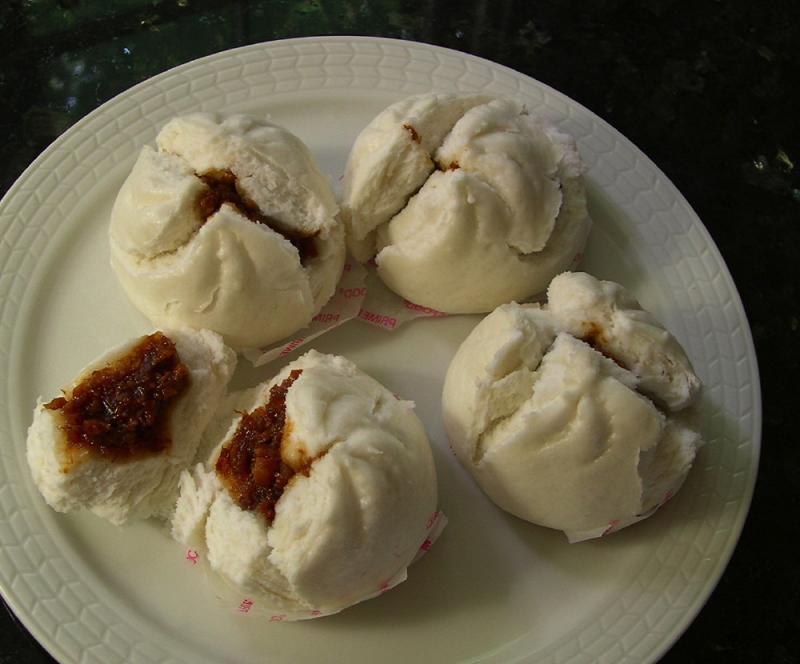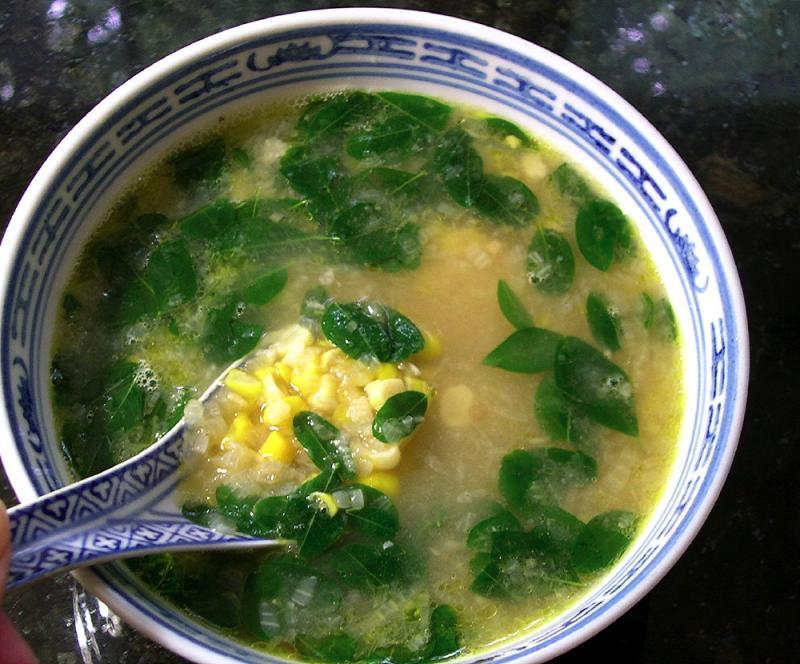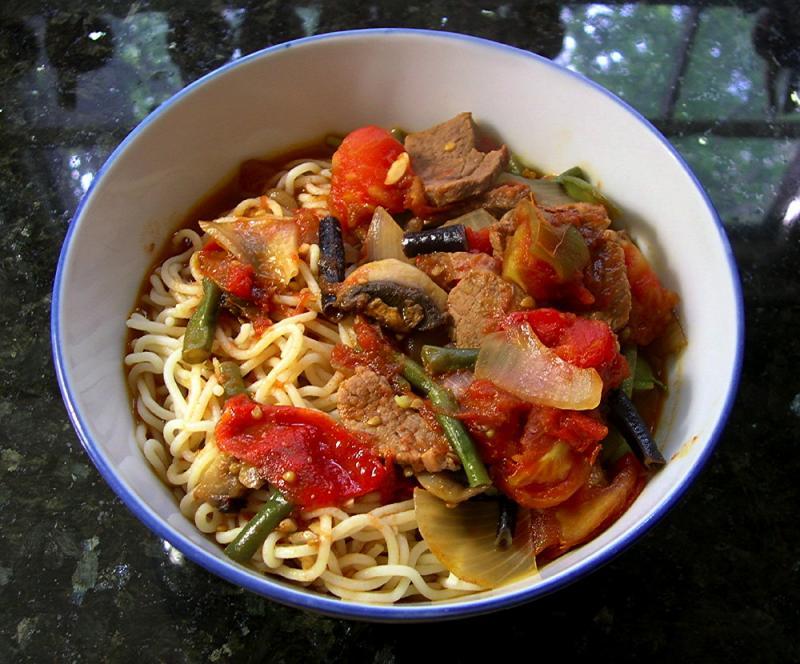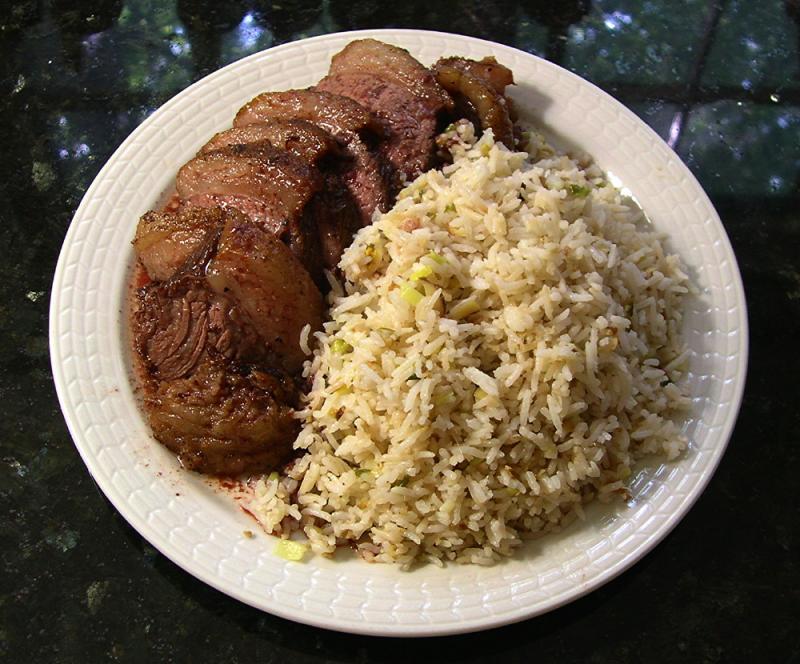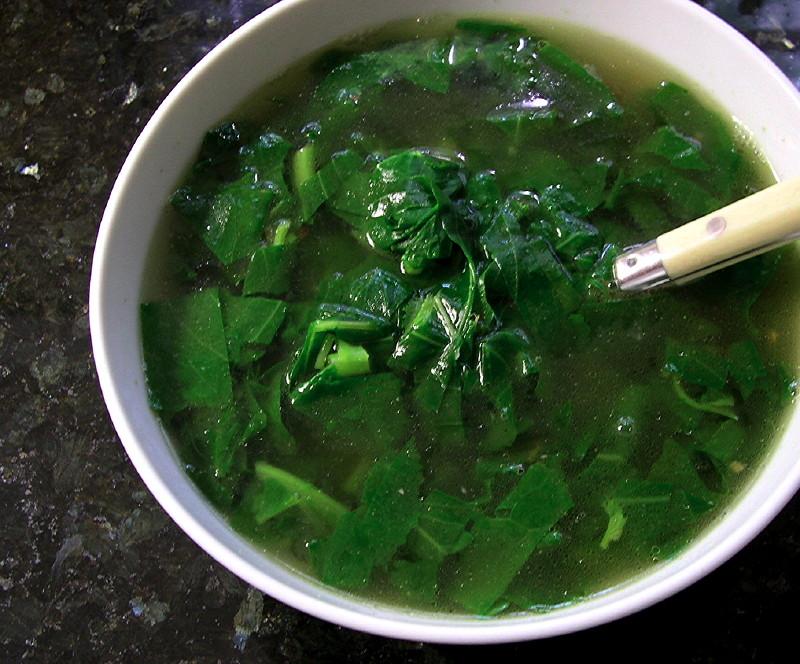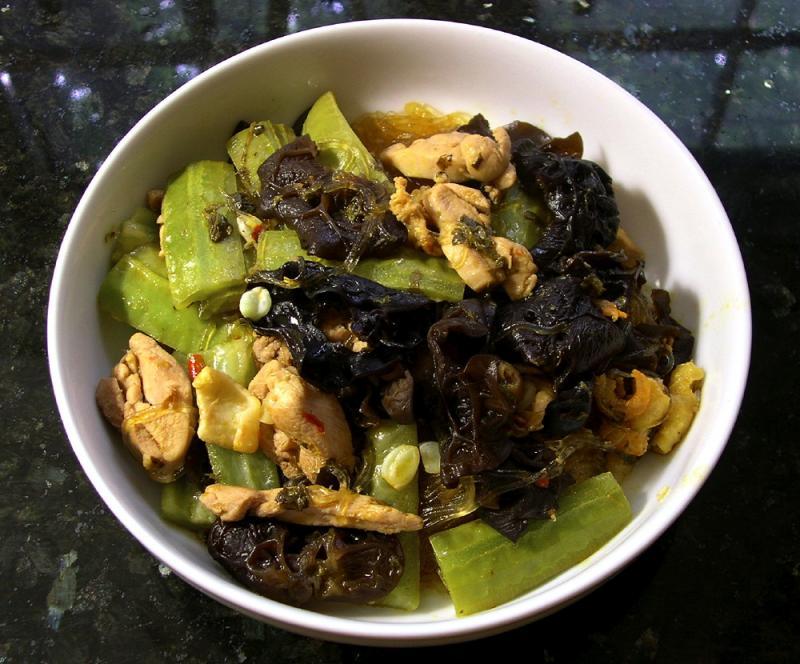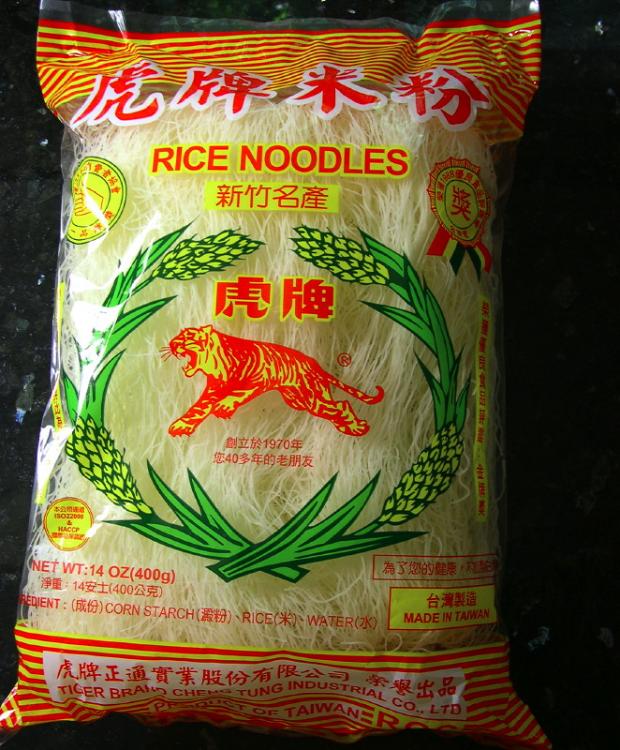-
Posts
3,810 -
Joined
-
Last visited
Content Type
Profiles
Forums
Store
Help Articles
Everything posted by huiray
-
Do Cuban and Medianoche sandwiches count? They *are* "grilled" (in a press) after all, and usually contain cheese. :-)
-
Interesting, Anna. Thanks for sharing that list. I've never done general grocery shopping over the web before, just for specific items - like vanilla beans/pods, Red Boat fish sauce, misc specialty items, that sort of thing. I've considered trying out one or other of the "supermarket-shopping-by-phone-or-web" services in my area but have yet to do so. Heh, I had to look up what "Brunswick sardines" were. Ah, a brand. What is the "Chinese lettuce" you got?
-
A brief description of the new Eataly due to open in November 2013, with the usual embedded links to the sources of the info. http://chicago.eater.com/archives/2013/09/17/eight-restaurants-planned-for-eataly.php
-
http://www.trademarkia.com/ramen-burger-86027910.html http://www.goramen.com/ http://chicago.eater.com/archives/2013/09/16/opening-tonight-new-burger-bar-offers-ramen-burger.php
-
Lindsey, glad you could join us. I appreciate reading about how you stretch your budget in your circumstances, and have read some of your posts in other threads that touch upon the subject as well. It's something close to my heart, and please do continue to post. That's a nice haul you describe there - would it be typical of what you would be able to get in your area at this time? Or at other times? I myself find that I hanker less for meat for various reasons although I do go the carnivorous route still on a regular basis, though! PUNNET - so that's what those thingies are called! I never knew that term until now, and Googling returned a mixed set of results which I had to wade through. Learned something today. However, I would question the description in the various online definitions of this term that it is primarily a UK term and/or that it is used mainly in the UK - these things are ALL OVER THE PLACE in the US at both regular supermarkets as well as Farmers' Markets and all sorts of places elsewhere.
-
Sunday breakfast: Char Siu Bau [Prime Food]. Simply steamed, bamboo basket. Monday breakfast: Simple Corn & Malunggay leaves soup. Chopped shallot, chopped smashed garlic, vegetable oil, bi-color corn kernels sliced off the ear, salt, water + chicken stock, simmer, trimmed malunggay leaflets.
-
Anna, fair enough. To each his or her own. I would say that I *would* personally expect the introduction(s) and author preambles/comments/etc of any book to be complimentary to the book. :-) I would fall over in shock if I ever saw a book with a scathing introduction printed right in the front of the book itself. I hope, however, that I might get a sense of what the book is about, cookbook or not, from the stuff at the front of the book; whether the book is successful or not I would have to find out for myself and for my own tastes. Of course, reading the reviews of people who share the same tastes as I do helps. As for if a dish is palatable or not - I think that is a individual thing, and something I find very palatable others might find disgusting, no? I like spaghetti tomato-meat sauce made with stick cinnamon and whole cloves and lots of vinegar as the flavoring/spicing agents, whereas many folks would gag at the very notion of a savory meat sauce for pasta with cinnamon (of all things!!) in it, let alone cloves as well! (as evidenced by an old thread on another food forum) Regarding the preview on amazon for this book - hmm, I gather you didn't see any recipes beyond that for basic chicken stock...did you sign in? When I do so, I see 16 actual recipes (on white paper) and 2 "Hakka Classic" recipes (on brown paper) one of which has 2 variations shown. Yes, plus that chicken stock recipe as well as other "basic" recipes.
-
You're welcome. I think the "look inside" feature on Amazon for this book is very valuable in this case. I encourage you to look at it without the jaundiced eye you might have for other examples of this feature for other books. Just curious - what leads you to so doubt and even discount the value of these peeks on Amazon.com into books? As for others who recommend cookbooks based on what they have tried - well, that's what they *did* try and they did like it, I would imagine, no? ;-) p.s. Mind you, I don't think Rubens went out and raped those Sabine women when he painted his "Rape of the Sabine Women"...just sayin'... :-) p.s.2. Martin Yan, in the front of the book (readable on Amazon's "look inside" feature) points out that Hakka cuisine is wrapped up more in the history of the Hakka people rather than in any geographical localization. p.s.3. The book is relatively inexpensive. It's not US$199.99 or some other steep price. For many people I imagine it is a reasonable sum of money - so if one bought it and it turned out to be something that one might not clutch to one's bosom for all eternity it might not be a complete loss - for many folks here, that is, I speculate. p.s.4. I have no fiduciary interest in the book or to the authors or collaborators in the books, who are personal strangers to me.
-
There has been some chit-chat about "The Hakka Cookbook" by Linda Lau Anusasananan here and elsewhere. For those interested, there is a thread on this book here, started by Anna N.
-
As a further note to my post above... One should really, really "sign in" to Amazon and read the "peek inside this book" on that link I gave. It expresses what the book is about, the "personal memoir" aspect of it , the cultural, geographical and culinary context and background of the Hakka in the "heartland" in China vs the diaspora around the world better than I ever could on these pages here. The recipes are well-written, reflect on differences between home-adapted and restaurant versions of the same dishes in many cases especially with the "Hakka Classics"; or on differences in the cuisine between the "Hakka Heartland" and in Beijing or in Malaysia; etc etc...and in re-reading some of them it does strike me clearly now how accurate (or at least evocative) they are - especially those printed on brown-colored paper, for "Hakka Classics", such as the one for braised pork belly with mustard greens ("mui choy kau yuk" (梅菜扣肉) in Cantonese, heh, my "normal" Chinese dialect) to what I remember of them when I was growing up. (I'm half-Hakka/half-Cantonese) @patrickamory - I *think* it was you who expressed somewhere here that you liked Fuchsia Dunlop's cookbooks because she talks about the cultural and culinary aspects of Szechuanese/Hunanese food and her personal journeys rather than simply list the recipes of various dishes. If you are the person I'm thinking of, I suspect you will love this book. BTW Anusasananan is of Hakka extraction herself - don't let her last name throw you off - it's just that she married a man of Thai heritage with that last name. Also, note that she doesn't really get into "Hakka food" in India - where Chinese food IN GENERAL is referred to as "Hakka food" regardless of whether it is Cantonese or Szechuanese or whatever in inspiration - simply because the Hakkas were the ones who first arrived there (especially in Calcutta) and introduced "Chinese" food to the masses there, heavily doctored to suit Indian tastes, of course. (and I mean HEAVILY doctored). Indian-Chinese cuisine is a category unto itself, in fact - see here and here for leads on this. I think Manchurian Chicken, for example, might be thought to be derived from a Hakka-influenced adapted dish or concoction. In the UK, there are even restaurants specifically devoted to this style of food. My understanding is that many Indians outside of India, when they hanker for "Chinese food", actually want "Indian-Chinese" food - although nowadays of course many also seek out "authentic" (a slippery word..."traditional" might be better) Chinese food.
-
Anna, I think using "Cheater's Asian Broth" is fine. :-) As for using Hendrick's gin as a substitute - just as in what Liuzhou said, I've never tried it; in any cooking let alone this dish. Besides, as a gin by itself, I HATE HENDRICK'S GIN. Just my personal taste. Hmm, did I mention I hate Hendrick's gin? ;-)
-
Well, I haven't actually cooked much from it (if at all) and as I mentioned elsewhere I tend to leaf through cookbooks for ideas although I do cook some recipes exactly as written sometimes. I do find it a nice read. As for "adherence to well-known Hakka dishes" - that might depend on where one is, as Hakka dishes might tend to get adapted to local conditions perhaps more than other Chinese regional cuisines. Still, the backbones of some of the dishes I recall from Malaysia and Singapore appear to be there in those recipes in the book. I don't know about those from the Hakka regions of China proper, although the author describes her meals with Hakka folks from regions of China as well as in other parts of China (yes, she traveled around in China too and wrote down (so she says) what those folks did). In many cases she also describes how some dishes vary from the "traditionally-done way" in the appropriate regions of China versus what is done in the Hakka (or otherwise) diaspora outside of China. Here's one mini-review (but concentrating on one "traditional" dish in the actual cookery part) from Andrea Nguyen - who *did* collaborate on the book; while the author (Anusasananan) joins in in the comments section: http://www.vietworldkitchen.com/blog/2012/12/soy-glazed-black-pepper-chicken-hakka-cookbook.html The Amazon website does allow one to peek into the book - perhaps a gander at it over there might be useful? http://www.amazon.com/The-Hakka-Cookbook-Chinese-around/dp/0520273281#reader_0520273281
-
One uses them like a vegetable in certain dishes or soups. If you like, take a peek at the culinary section of the Wikipedia article for a quick run-down from various cuisines. :-)
-
Thanks for the response. I guess both names are applicable and probably depends on where one is. ETA: There is another name/type - celtuce - although the leaves for this are more romaine-like in general or at least less spiky with few side-lobes if any, and the Chinese name(s) is/are different (i.e. not "麥菜"). Linda Lau Anusasananan in her cookbook "The Hakka Cookbook" (pg 251, in section: 'The Hakka Pantry') refers to celtuce and lists the alternative names as "Chinese lettuce, A-choy, stem lettuce, celery lettuce, asparagus lettuce". In the end they all may be just variants of each other!
-
Are you in the US? If you are really interested, let me know. I get them through a French dealer at half of the cost you'll spend at any supermarket and double the quality. I don't think I can budget any now - but if your offer still stands at a later time I would definitely appreciate it. Thanks! Well, white won't start until October, and you wont see Perigord until probably late November/early December, weather depending. Feel free to shoot me a PM if you are ever interested. The offer stands for you or anyone else on the board. I'm interested...but...What sort of money are we talking about?
-
Here's what I got over Thurs-Sat. I might have gone a bit overboard...but a lot of the stuff from the Chinese grocery were restocking or stock-addition items. :-) Asia Mart: Fresh skinny wonton noodles Fried tofu puffs [Phoenix] Fresh quail eggs Soft tofu [Hinochi] Shoyu ramen (nama ramen type) [ Sun Noodle] Mung bean vermicelli (cellophane noodles) [Long Kow] Preserved plum "snacks" (Chan Pui Mui; 陳皮梅) [summit Import Corp.] Shoyu instant noodles [Myojo Chukazanmai] Chinese BBQ pork buns (frozen) (Char Siu Bau) [Prime Food] Ground bean sauce [Koon Chun] Hoisin sauce [Koon Chun] Fermented soy beans (whole bean) [Dragonfly] Gai-lan Fresh young ginger (this is actually really fresh stuff) Spring bamboo shoots (packaged) [Yes! Produce] Chinese chive flower (buds) Chinese celery (this was for a vendor at a local Farmers' Market) Malunggay leaves (Moringa oleifera) Watercress Scallions/green onions (@4 bundles/$1) Coriander leaves (@3 bundles/$1) Napa cabbage (Wong Nga Pak) (@29¢/lb) Fresh wood-ear fungus/"mushrooms" (Muk Yee) Fresh Tung Koo (Chinese-type thick-cap shiitake-type mushrooms) Fresh galangal Fresh Thai basil Taiwan A-choy stems¶ Garlic (Chinese) Gnarly-skinned limes Fresh lotus roots Chinese-cut pork spare ribs Fresh whole beef shins Fish head (salmon) + fish bones (salmon) Half a Cantonese roast duck Chinese/Cantonese BBQ pork Maxim (美心) ( a famous Hong Kong bakery) mooncakes;§ lotus seed/double duck egg yolks ¶ The thick, succulent, de-leaved stems of what would normally be sold as leafy Taiwanese A-choy § The Mid-Autumn Festival is upon us... Broad Ripple Farmers' Market: Eden Farms - Tuscan kale, hydroponic, 1 head Norman Mullet Farm - Music fresh garlic 10 heads Fields Farm Fresh - Bicolor corn ears Yeager Farm Produce - baby okra, shishito peppers Compean & Sons - 1 head of cauliflower Funny Bone Farm - 2 leeks, reallllly long white parts Carmel Farmers' Market: Van Antwerp Farm - Poblano peppers Bading Farm - Jolokia (Ghost) chilli peppers Brotgarten - 1 Epi wheat-stalk loaf Middlefork Farm - 4 yellow zucchini Daily Farm - Chinese-type long skinny eggplants, 2 dark purple/2 light purple Farming Engineers - Green & purple Chinese long beans (Vigna unguiculata subsp. sesquipedalis)
-
http://www.finecooking.com/recipes/chinese-rose-wine-shrimp-soup.aspx I used Er guo tou Chinese famous liquor from the LCBO here in Ontario which research via Mr. Google suggest is the appropriate spirit. Anna, thanks. Just a comment - "rose wine" usually is mei kwei lu chiew (as mentioned in the recipe), literally "rose dew wine/spirit" or "玫瑰露酒" (Yale Cantonese: mui4 gwai3 lou6 jau2) whereas er guo tou (pinyin) ("二鍋頭") is a double-distilled sorghum-based wine/spirit (literally "head of the second pot") Regardless, your dish looks delicious! I've never made this, I should try it.
-
What dialect group is your mother? (It might matter) "麥菜" usually refers to a type of long-leaved lettuce, often with non-cantonese/non-SE Asian folks, also known as "Taiwan A-choy" in many parts. "長" means "long"/"length", so it would be a long form of this lettuce. Does the plant look like any of these in this Google image set? Does your mother grow it on and does the plant develop a long, thick succulent stem if she does so? (This is commonly done with Taiwan A-choy; the thick stems are cut up and stir-fried, just like one would do with thick gai-lan stems, for example) (In fact, I bought some today) "Mak Choy" (those Chinese characters, in Cantonese) usually refers to a form of romaine lettuce in places like SE Asia and some parts of Southern China/HK, OTOH, and "油麥菜" or yau ("oil") mak choy is a very common dish in Malaysia & Singapore, for example, and always is a dish of stir-fried smallish romaine-type lettuce (you would know it as cos lettuce in the UK for the larger-sized equivalent) In non-Cantonese areas/China proper "油麥菜" would tend to refer to the Taiwan A-choy type. Your picture of the dish suggests more the Taiwan A-choy type, rather than the romaine-type; and I'm sure you would recognize cos lettuce... What I see in your pic looks not unlike a stir-fried version (with ginger, I also see) of a broth/soup with Taiwan A-choy such as seen in this; whereas stir-fried romaine/cos ("油麥菜") would look like this.
-
That's nice, patrickamory. Details?
-
Anna_N, could you describe your rose wine shrimp soup a little more, please? (Also identify exactly which "rose wine" you used)
-
Of course Toots is concerned about his eating habits. He eats crap, day in and day out. And yes, he's lazy. And he lives in some rural village deep in the heart of Texas ... when asked, he didn't even know what stores were near his home ... he just shops at the local market. [Hyperbole alert]For all he knows there's a Costco or a Whole Foods just around the corner.[/Hyperbole alert]That's the issue, IMO. Others have mentioned situations where this chap might be MADE TO COOK because it's the right thing to do. That, IMO, invites passive-aggressive responses from him. If he has no current interest, as his habits seem to suggest, then IMO it would truly be a "horse, water" situation. Perhaps if you somehow managed to contrive to get him in the kitchen while you cooked something not too challenging, but but you talked about it while engaging him in miscellaneous chit-chat? So that he notices that "cooking well" isn't such a non-male-normative activity? Perhaps he will respond, perhaps he will not. Good Luck.
-
Some meals from the past few days. ---------------------- • Sliced beef; sautéed w/ chopped smashed garlic, white onion wedges, “Bull-Dog” Worcestershire sauce, Shaohsing wine [Wei Yuan], fish sauce [Red Boat], sliced Roma beans, chopped green & purple Chinese long beans (Vigna unguiculata subsp. sesquipedalis), sliced button mushrooms, wedges of Japanese Black Trifele tomatoes. Served over fresh spaghettini [Nicole-Taylor's]. ---------------------- • Leftover top sirloin cap, reheated (and hence cooked a little more & "de-redded”). • Leftover ginger, scallion, ryori-shu fried rice. • Collard greens (hydroponic stuff) soup. ---------------------- • Stirfried-then-stewed mélange of hot peanut oil plus chicken fat + skin,§ dried shrimp (“har mai”, pre-softened in warm water), sliced de-boned chicken thigh meat, chilli paste with holy basil leaves [JHL = Jack Hua Co.], trimmed black wood-ear fungus (“muk yee”, dried stuff pre-softened in water), water, aged “gourmet” rice vinegar [Kong Yen Foods] & sweet mirin [Honteri]; then trimmed, de-ribbed, sliced Chinese angled loofah (Luffa acutangula) towards the end and finally mung bean cellophane noodles (pre-softened in water) and cooking continued for a minute or two more till the noodles turned transparent and most of the liquid was absorbed/reduced. Salting adjusted. §The fat and skin was removed from one large chicken thigh, chopped up, and added to the hot oil at the beginning. ------------------------ • Pork, scallop & shrimp dumplings (“sui kow”) [Wei Chuan] with skinny wonton noodles in chicken stock plus watercress (whole branches, a fistful/whole bunch) wilted in the stock. (A "tired, cranky, don't-really-feel-like-cooking" meal. :-) )
-
While I love a good improv pasta dish, it's not really possible to cook dried pasta in less than 25 minutes, is it? At least 10 minutes to go from tap to boiling, plus another 7-12 minutes, depending on the pasta shape. I cook quick pasta dishes on many weeknights, and it's about 35 minutes from the time I fill the pot to putting it on the plate. Seriously, is there a faster way to cook pasta? Are you using a pressure cooker, special microwave device, or do you have a hot water dispenser or what? Angel hair? I've successfully cooked that in a pinch with boiling water from an electric kettle (which boil fairly quickly) and a bowl and something to cover the bowl with to hold the heat in. Don't recall the timing exactly but it's pretty quick. (Likewise things like some rice noodles.) I myself still cook any kind of Italian-type pasta in a pot of boiling/simmering water, but as you mention certain types of fine (i.e. skinny) rice noodles ("mei fun") I'll simply put in a big bowl, pour boiling water over it, cover (with a plate, for example) and leave for 3-4 minutes and simply decant off the water and have noodles ready for eating. Dress with a savory sauce or mixture or whatever of one's choice. Here's one brand of "mei fun" that I like and buy regularly (Tiger brand; made in Taiwan) that work well this way. There are others - some work very well with the simply-steep method, some less well (or might need a longer steep time and/or be a little more "tough"). *Very* fine grades of "mei fun", or fine (white) wheat noodles (Chinese type, some Japanese types) would fall apart and/or congeal into a blob if one tried to simmer them then drain them, and certain types are basically barely passed through boiling water before placing into soup (not drained and tossed w/ sauce, same "congealed blob" phenomenon will occur).
-
It takes me about 25 minutes or more to cook a pot of rice - about 10 minutes for the water to drop to just below the level of the rice, on gentle heat, then 15 minutes (covered pot) on low heat to complete the cooking...and usually I leave it to stand (covered) after switching off the heat for 5-10 minutes before I even pop off the cover. I could force the process and trim the time all around by quite a bit, but I run the real risk of getting what is known in Cantonese as "sang kuat fan", or rice that still has a hard, uncooked center in each grain. (For that matter, I find the preferred "al dente" rice in risotto to sometimes be perilously close to "sang kuat fan" - meaning NOT what I would look for in my rice)
-

Filipino Food Is Fantastic!
huiray replied to a topic in Elsewhere in Asia/Pacific: Cooking & Baking
In fact, I believe at least one US supplier of the plant (Calmondin, that is, or Calamansi as discussed here) states that it is hardy down to 20ºF (that's 20 degrees Fahrenheit), if I remember correctly. @patrickamory, if you do try that shop on Mulberry (Asia Market Corp) in NYC to seek out calamansi one day, in addition to the Chinese name I mentioned on the "Dinner" thread you might also try asking for it in Malay - "limau kasturi" or "limau kesturi"- as I seem to remember some folks there speaking Malay some years ago. (To reiterate, calamansi is not used *just* in Filipino food - it is widely used in SE Asia...Malaysia, Singapore, Indonesia, Thailand, etc...alongside other limes like kaffir limes (limau perut, in Malay) or the equivalent of Key Limes (limau nipis, in Malay))



